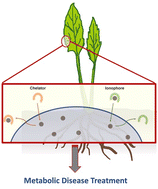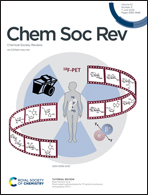Plant-derived chelators and ionophores as potential therapeutics for metabolic diseases
Abstract
Transition metal dysregulation is associated with a host of pathologies, many of which are therapeutically targeted using chelators and ionophores. Chelators and ionophores are used as therapeutic metal-binding compounds which impart biological effects by sequestering or trafficking endogenous metal ions in an effort to restore homeostasis. Many current therapies take inspiration or derive directly from small molecules and peptides found in plants. This review focuses on plant-derived small molecule and peptide chelators and ionophores that can affect metabolic disease states. Understanding the coordination chemistry, bioavailability, and bioactivity of such molecules provides the tools to further research applications of plant-based chelators and ionophores.



 Please wait while we load your content...
Please wait while we load your content...